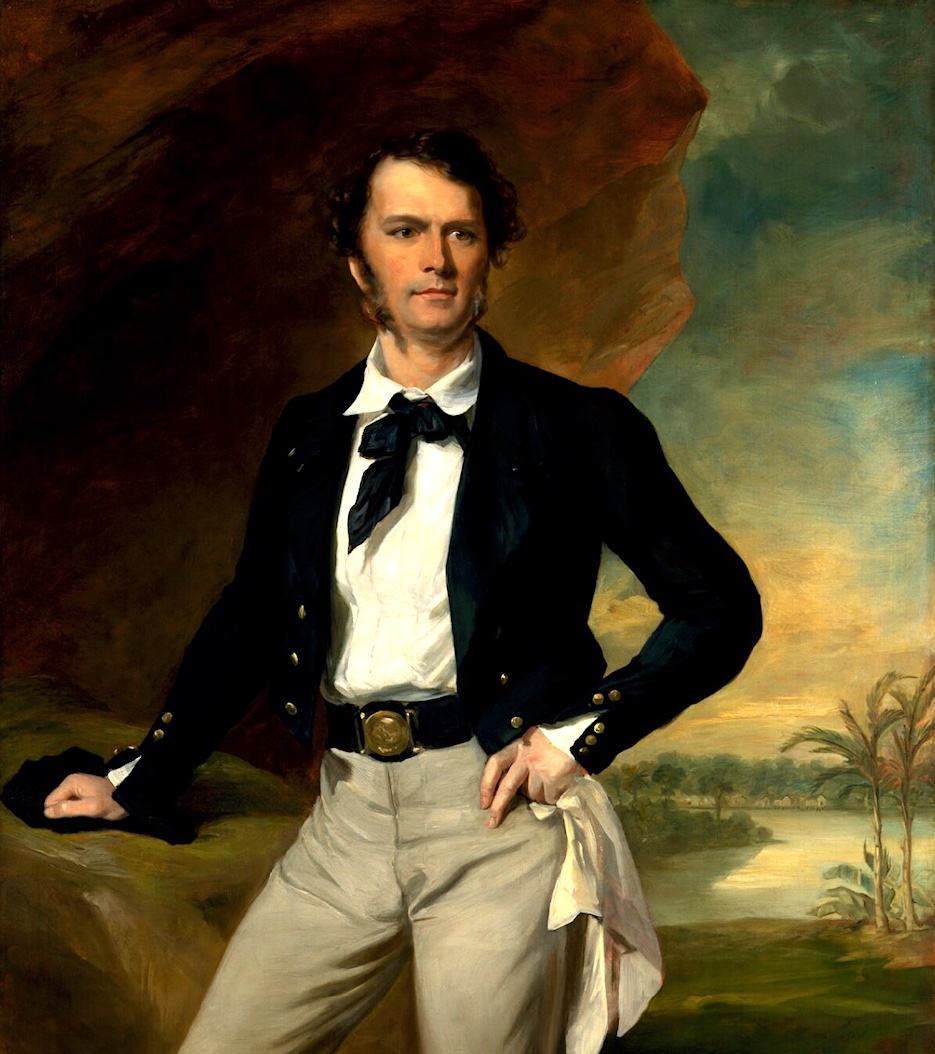A visit to the National Portrait Gallery in London is always a treat and yesterday, in Rm 23, we found this arresting painting, of Sir James Brooke, The (1st) Rajah of Sarawak, 1804-1868
The painting is by Sir Francis Grant – oil on canvas, dated 1847
Not much is given at the NPG but Sir James, who was knighted in 1847, was apparently Conrad’s inspiration for the main character in the second half of his famous novel Lord Jim (1899). This might be a tenuous connection, but looking into Brooke’s life does indeed read like a novel itself; soldier, sailor and a man who would be king (indeed Rudyard Kipling mentions him in his book of the same name).
He was born in India and at 12 went briefly to school in Norwich. By the age of 15 he was back in India as a subaltern in the East India Company’s Bengal Army. He was wounded in the Anglo Burmese war of 1825 and returned home, to Bath, on a wound pension of £70 a year. On his parents’ death (1834/5) he inherited £30,000 and purchased The Royalist, a 142 ton schooner, setting sail in 1838 intending to trade in the Far East. He turned out to be a better leader/soldier/captain than trader and for his help in crushing a rebellion in Sarawak (Malay Archipelago) the Sultan of Brunei made him its governor in 1841. Brooke set about crushing the rife piracy in the region and when the sultan was deposed he was able to take over Brunei and restore the Sultan to rule. In thanks the sovereignty of Sarawak, previously a vassal state of Brunei was ceded to Brooke as its rajah – the “first white rajah” in 1842. Becoming a “king” in the far east in those times wasn’t just the stuff of legend, or a Kipling novel, and Brooke had the full support of Britain. He and his heirs ruled the state until 1946 – when the British Empire effectively folded following World War 2.
For his part in the expansion of the Empire this earned Brooke a knighthood and the Freedom of the City of London in 1847. Like many officers of his era he was interested in science and while in London he invited the naturalist Alfred Wallace, a contemporary of Charles Darwin, to Malaya, and the early proponent of natural selection and evolutionary biology later named a large birdwing butterfly Trogonoptera brookiana, after him.
In some quarters Brooke is described as being gay, though he recognised an illegitmate son, born in the mid 1830s. He was famously anti slavery and never afraid of a fight. Aged 58 in November 1862, he rescued a large group of kidnapped slaves from a band of Phillipino Moro Pirates in a pitched naval battle off the coast of Mukah, on the north coast of Sarawak. With two steamers under his command Brooke took on two fleets of three 50ft prahus, sinking four by ramming them and damaging the other two with cannon fire. Around 100 pirates were killed or drowned while Brooke’s group of inferior numbers were apparently mostly unscathed. It’s a great little sea skirmish – described: HERE
Despite several attempts on his life and having suffered several strokes Brooke ruled Sarawak until his death in 1868. He had no legitimate children and appointed a nephew to rule after him. Brooke is buried in St Leonard’s Church in the village of Sheepstor on Dartmoor.
Apart from the Lord Jim connection Brooke inspired Nicholas Montserrat’s The White Rajah and Errol Flynn, who also sailed those waters in a schooner in his pre-Hollywood days, co-wrote a script The White Rajah for Warner Bros in 1936 which was scheduled but, despite many attempts, never actually made into a film; some say there are still plans to make it all of 80 years later!
The painting caught our eye for its casual naval appearance with Brooke in a Royal Navy officer style belt, short cut reefer jacket and black silk neckerchief. It’s interesting to see how only the three lower buttons, on his sleeves, are used to close the cuffs (!).
No-one would describe Sir Francis Grant as a marine artist, but this painting conjures forth a fabulous story of an interesting sailor… and a man who, through brave seamanship, became a king.


